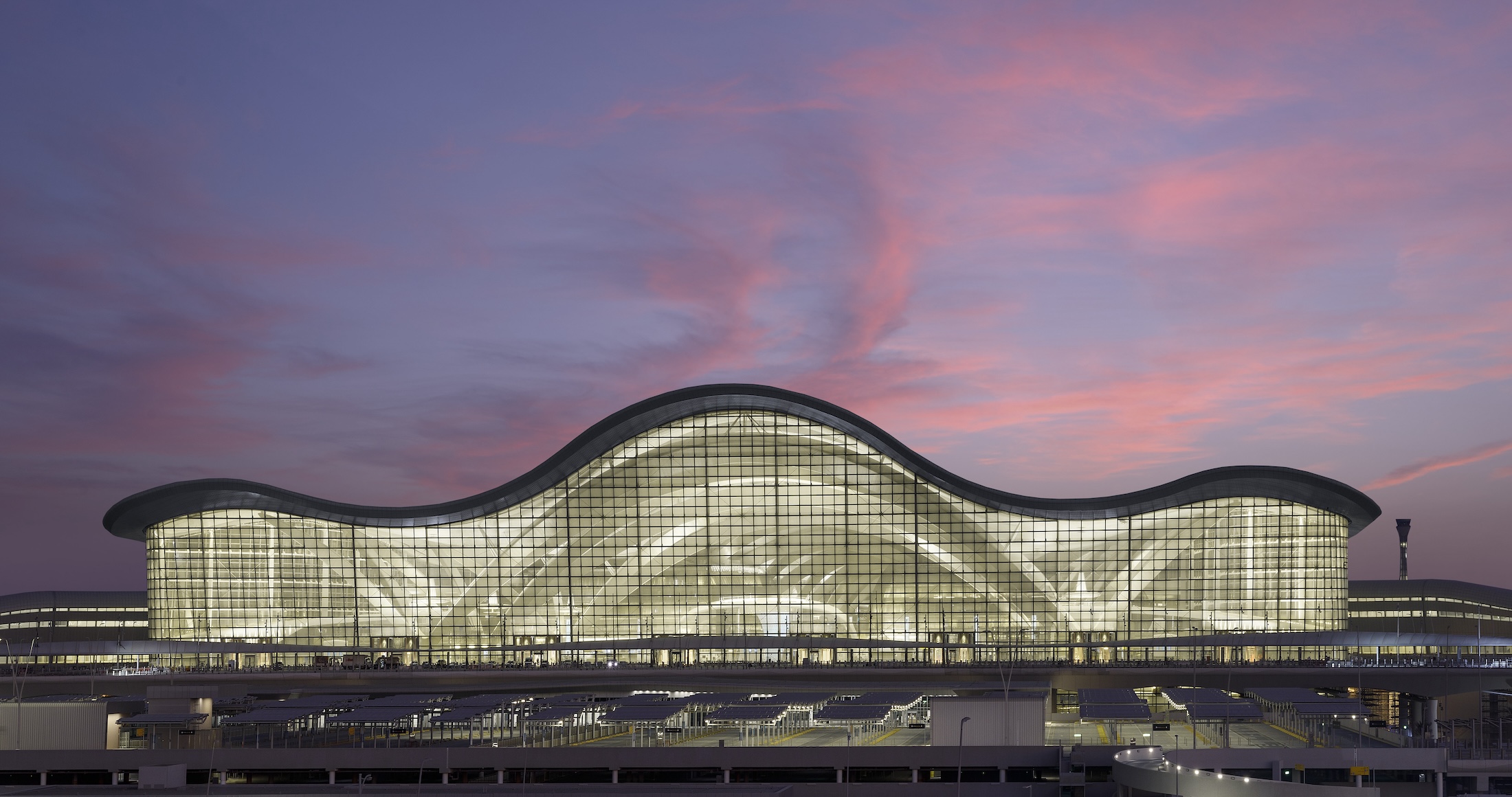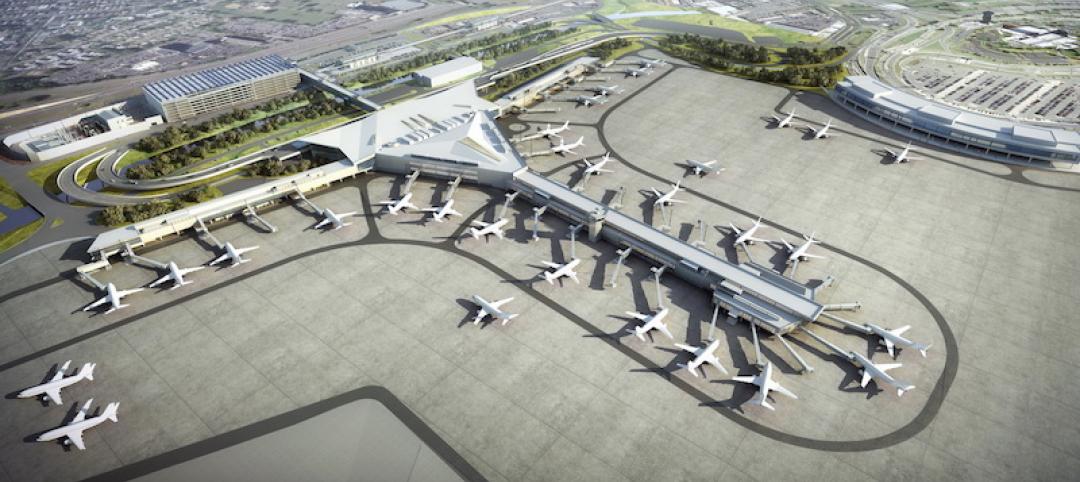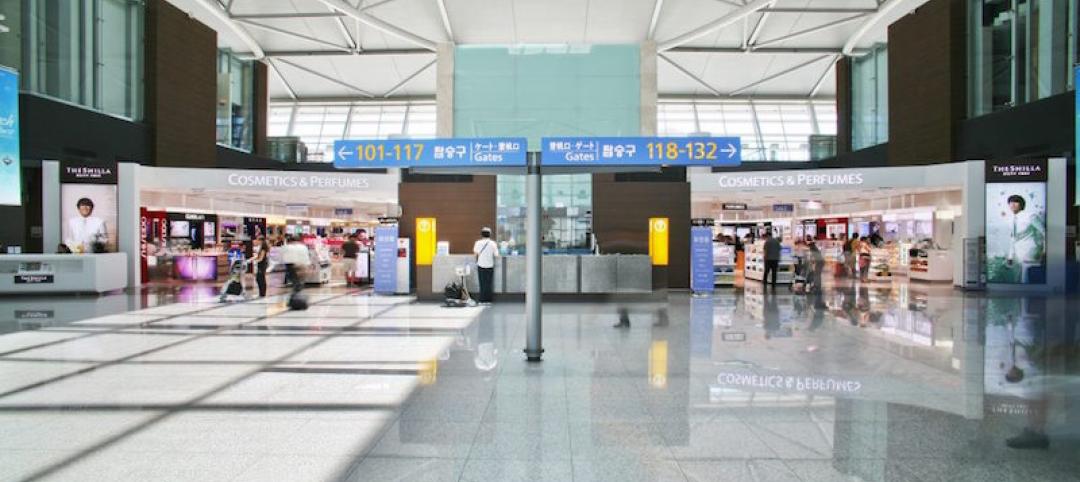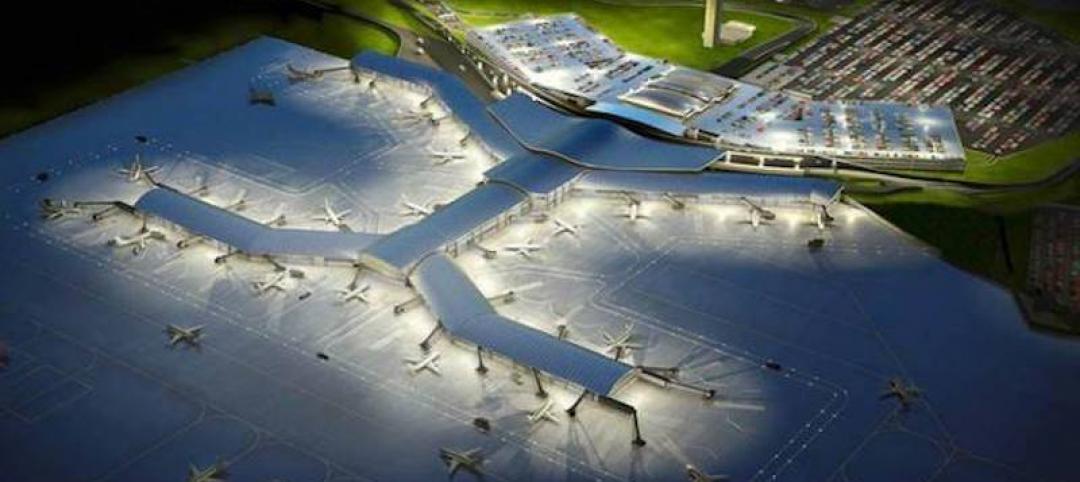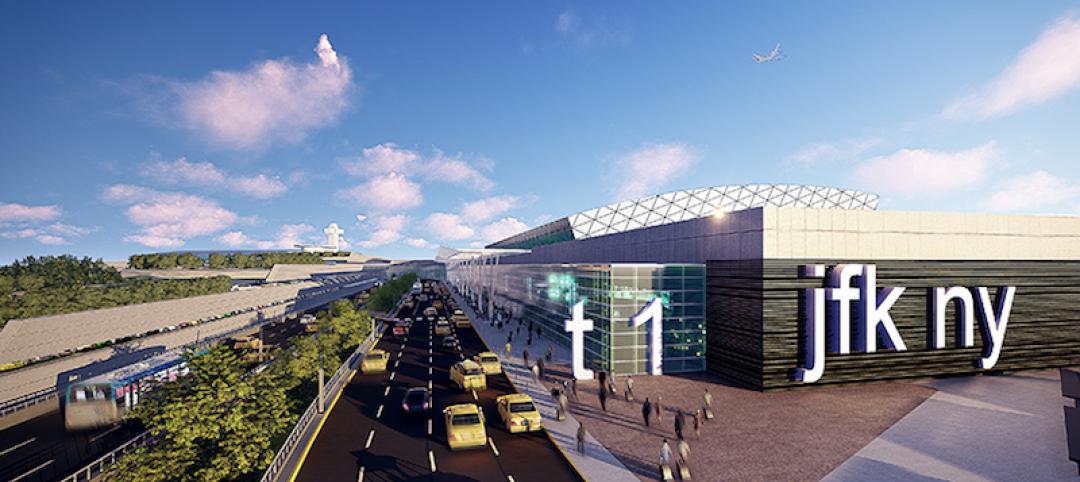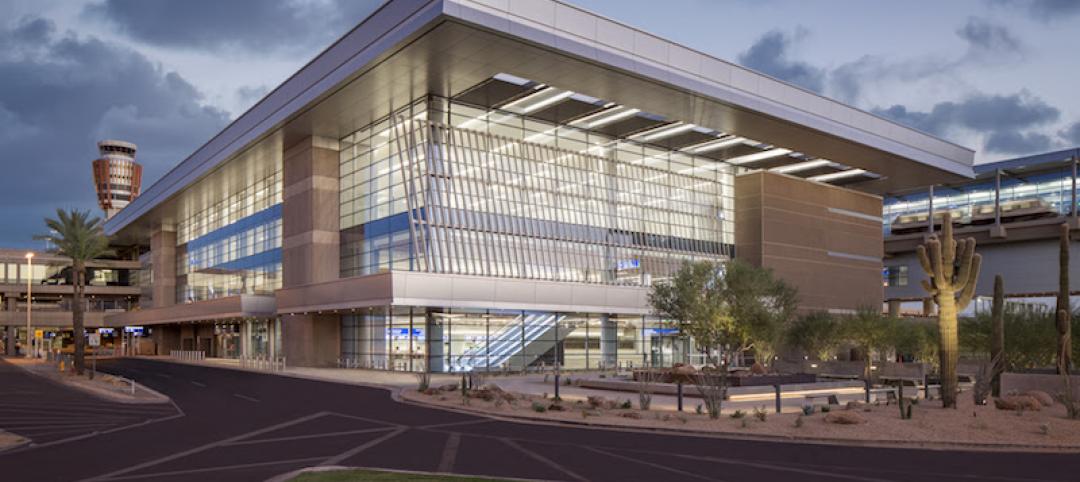Formerly the Abu Dhabi International Airport, the newly renamed Zayed International Airport in the United Arab Emirates has recently opened Terminal A. The airport terminal will serve up to 45 million passengers annually, doubling the airport’s previous capacity.
Kohn Pedersen Fox (KPF) designed Terminal A—the firm’s largest and most complex airport project to date. Arup and Naco provided the engineering services.
The terminal’s freestanding glazed façade, at 50 meters (164 feet) high, provides the interior with abundant daylight. But the glass façade could not use external shading devices, which could be affected by sand accumulation. So instead, to protect passengers from glare and overheating, the design team took inspiration from the desert’s undulating sand dunes to create a roof that drapes over the façade. The team also inclined the façade and used high-performance fritted glass to control glare and reduce the impact of the desert sun.
Also 50 meters high, the departure hall is a largely column-free space. The supporting arches are visually separated from the roof, so that the ceiling seems to appear weightless.
At its widest point, the one-roof terminal is 319 meters (1,047 feet) wide. The central roof, which spans up to 180 meters (591 feet), contains two four-floor buildings and houses a 138-room hotel and offices.
KPF designs landmarks in the airport terminal to orient passengers
Within the terminal’s monumental scale, KPF created several landmarks to orient passengers and provide moments of interest. For example, an elevated staircase in the arrivals hall provides dramatic views of the central space.
The terminal’s X-shape design improves operational efficiency and passenger flow, with an average curb-to-gate walking time of 12 minutes. The design team calibrated the distances between any two points in the terminal to encourage walking and avoid the need for an automated people mover system. To assist with wayfinding, each pier of the X has its own theme: desert, sea, city, and oasis.
“The architecture has a strong connection with the natural environment of this emirate, where each of the four piers points to and is inspired by Abu Dhabi’s desert, sea, city, and oasis,” Elena Sorlini, Managing Director and interim CEO, Abu Dhabi Airports, said in a press statement.

According to the statement, Terminal A will be the world’s first terminal to include all nine biometric airport touchpoints. With 163 retail and food-and-beverage concessions, the terminal will serve 28 airlines and 117 global destinations.
“From the outset, our goal was for the airport to serve the emirate and represent the city of Abu Dhabi, with a design that referenced its cultural and natural environment,” said Mustafa Chehabeddine, Design Principal, KPF. “We established a design language for continuity and flow throughout the project, developing a set of guidelines that ensured each element of the terminal, from the check-in desks to the lighting chandeliers, felt as though it belonged in the building.”
Here is the Design Essay from KPF:
The terminal is raised above the road level, as if on its own plateau, with its illuminated interior providing a striking presence on the horizon. The building is instantly recognisable to drivers on the Dubai-Abu Dhabi highway, which links the UAE’s two largest cities.
On the approach to the terminal, the integrated system of roads and landscape leads passengers to the imposing, 50-meter-tall, free-standing glazed façade and monumental space inside.
The scale of the Departure Hall—a 50-meter-high, largely column-free space—endows the building with an open, outdoor quality, further enhanced by atmospheric lighting. The supporting arches are visually separated from the roof, making the ceiling feel almost weightless. Two four-storey buildings are contained under the central roof and house a 138-room hotel and offices.
A key challenge in the envelope design was to provide ample daylight whilst protecting passengers against glare and overheating. This balance was achieved without the use of external shading devices, which could be affected by sand accumulation. Rather, by purposefully undulating the form of the roof and draping it over the façade, the amount of glazing along the piers was cut in half, while inclining the façade further reduces the impact of the desert sun. High-performance glass, with fritting in a graduated pattern, was used where glazing was required to control glare.
To balance the terminal’s monumental scale, KPF created a series of landmarks, including the Sana Al Nour, the Feature Staircase, and the sculptural Shell, to orient passengers and provide moments of interest along their journey.
Inspired by traditional Islamic architecture, Sana Al Nour was designed by Carpenter | Lowings in collaboration with KPF and the wider design team to direct light and air from the Departures to the Arrivals Hall. One of the largest indoor public art features in the Middle East, it is 22 meters tall by 30 meters wide and features 1,632 individual curved leaves of translucent glass.
The Shell and Feature Staircase
Often airports prioritize the departure experience. At Terminal A, the arrival sequence is elevated in the building to provide dramatic views over the central space. Linking the arrival corridor with the Arrivals Hall, the feature staircase is an exciting first step in one’s journey to Abu Dhabi.
Located at the end of the passengers’ journey, the Shell’s exterior is composed of glass with a fading frit pattern that becomes more transparent as it rises and picks up colors from the lighting. Inside the glass, a three-dimensional sculpture references the wayfinding patterns that occur throughout the terminal. This element combines polished brass with Cor-Ten steel, generating visual interest through an interplay of smooth and rough surfaces. From here, a spiral stair with concrete treads, suspended within a curved glass enclosure, leads to the floor below.
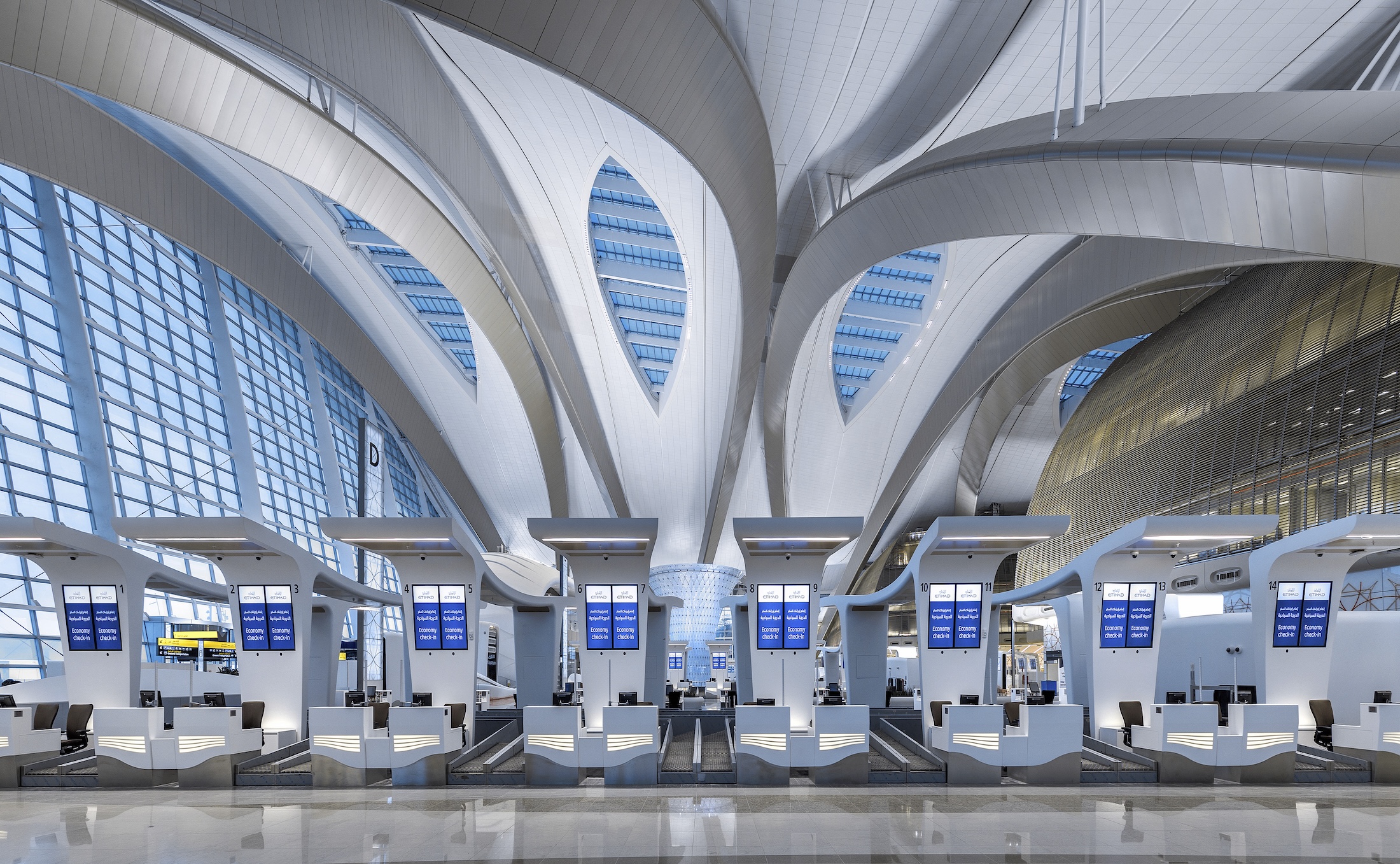
Setting a New Standard in Airport Passenger Experience
Creatively and meticulously planned, Terminal A boasts an average curb-to-gate walking time of only 12 minutes. Terminals with pier-based layouts offer simpler organization and higher aircraft capacity, but often result in longer walking distances for passengers. At Terminal A, the distance from front door to last gate, and between any two points, was carefully calibrated to encourage walking and avoid the need for an APM (automated people mover) system for the first phase. Parametric geometry modeling was used extensively in the design process to optimize the X-shaped plan for operational efficiency and passenger flow.
To aid wayfinding, each pier of the X is themed, inspired by a different element of Abu Dhabi’s character: desert, sea, city, and oasis. As a major airport for international connections, an efficient transfer process was required. The centralized baggage handling system has enabled the fastest transfer connection time of just 45 minutes, which is best in class.
Terminal A will be the first terminal in the world to include all nine biometric airport touchpoints (see infographic in images). In the first phase, biometric solutions will be installed in key areas, such as self-service bag drops, immigration eGates, and boarding gates. These and other cutting-edge technologies, including an advanced baggage handling system capable of processing up to 19,200 bags per hour, will make the Terminal A passenger journey one of the world’s most seamless and efficient.
Anticipating the Future of Air Travel
Appreciating that the nature and operation of air travel is ever changing, the terminal was designed to accommodate varied interior layouts by using large-span, structural arches as an alternative to the fixed column grid found in most modern terminals. The one-roof terminal is 319 meters wide at its widest point, with the central roof, supported by a series of paired leaning arches, spanning up to 180 meters. Elements below can be adjusted on an as-needed basis to accommodate changes in check-in, emigration, security, or otherwise.
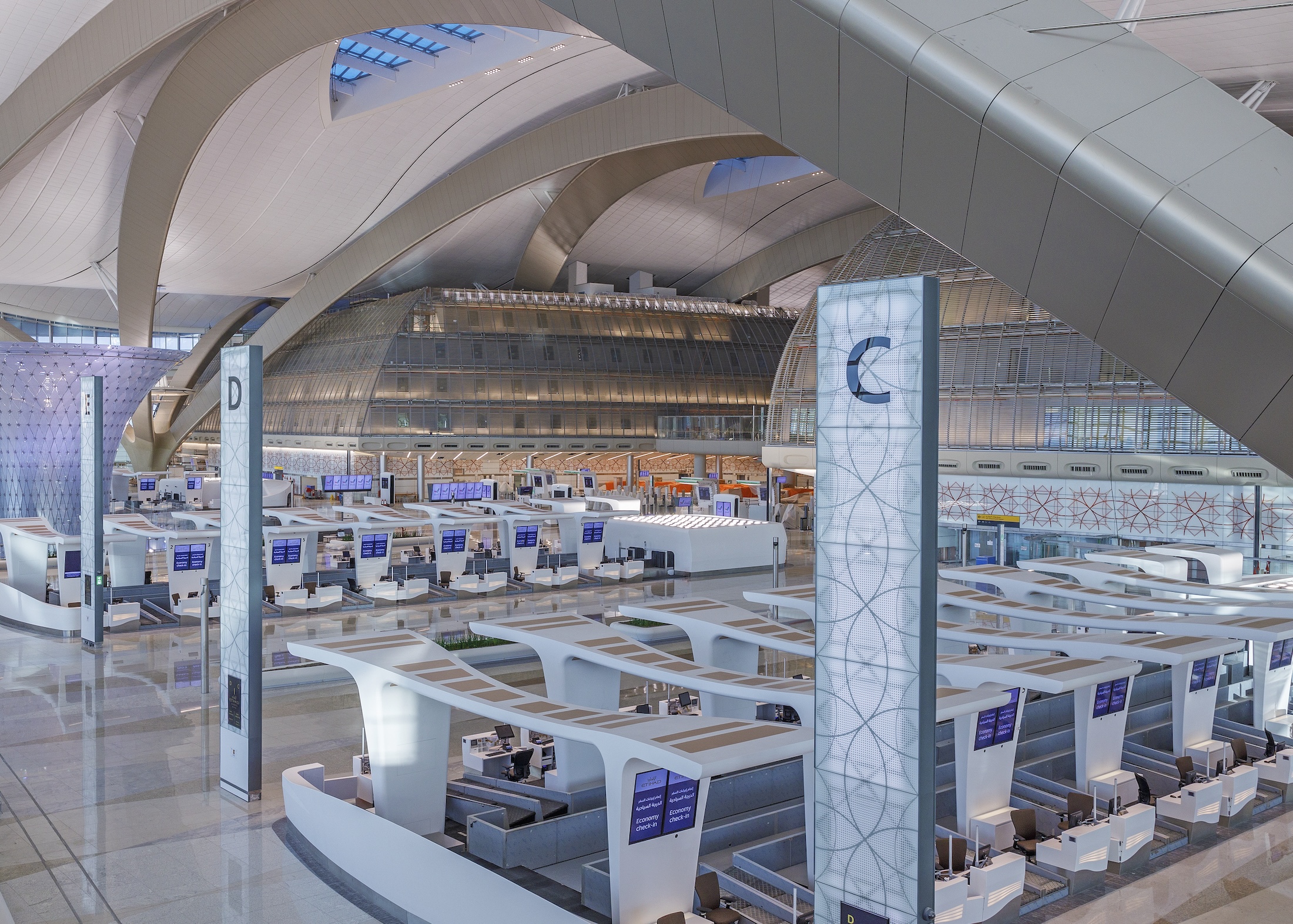
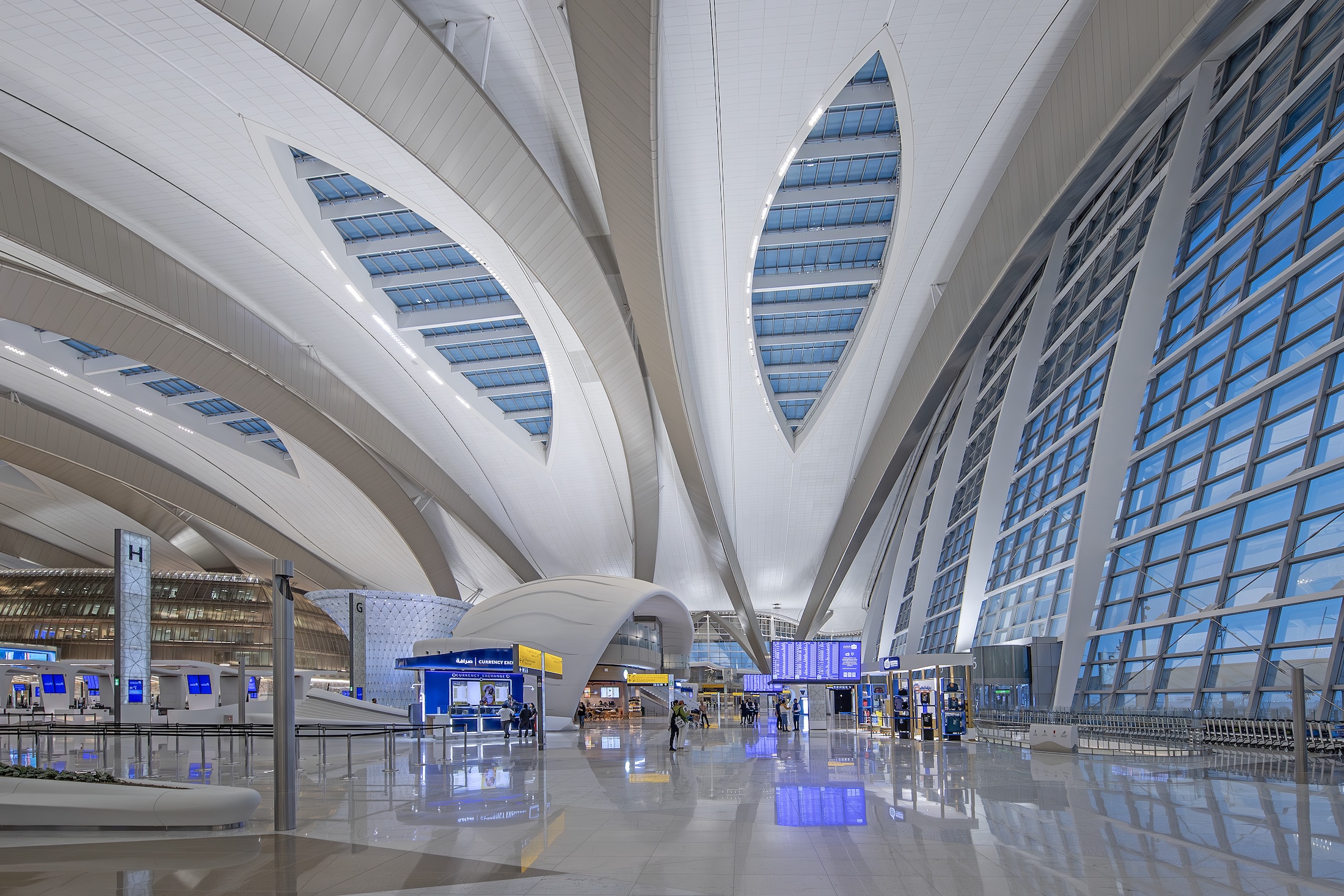

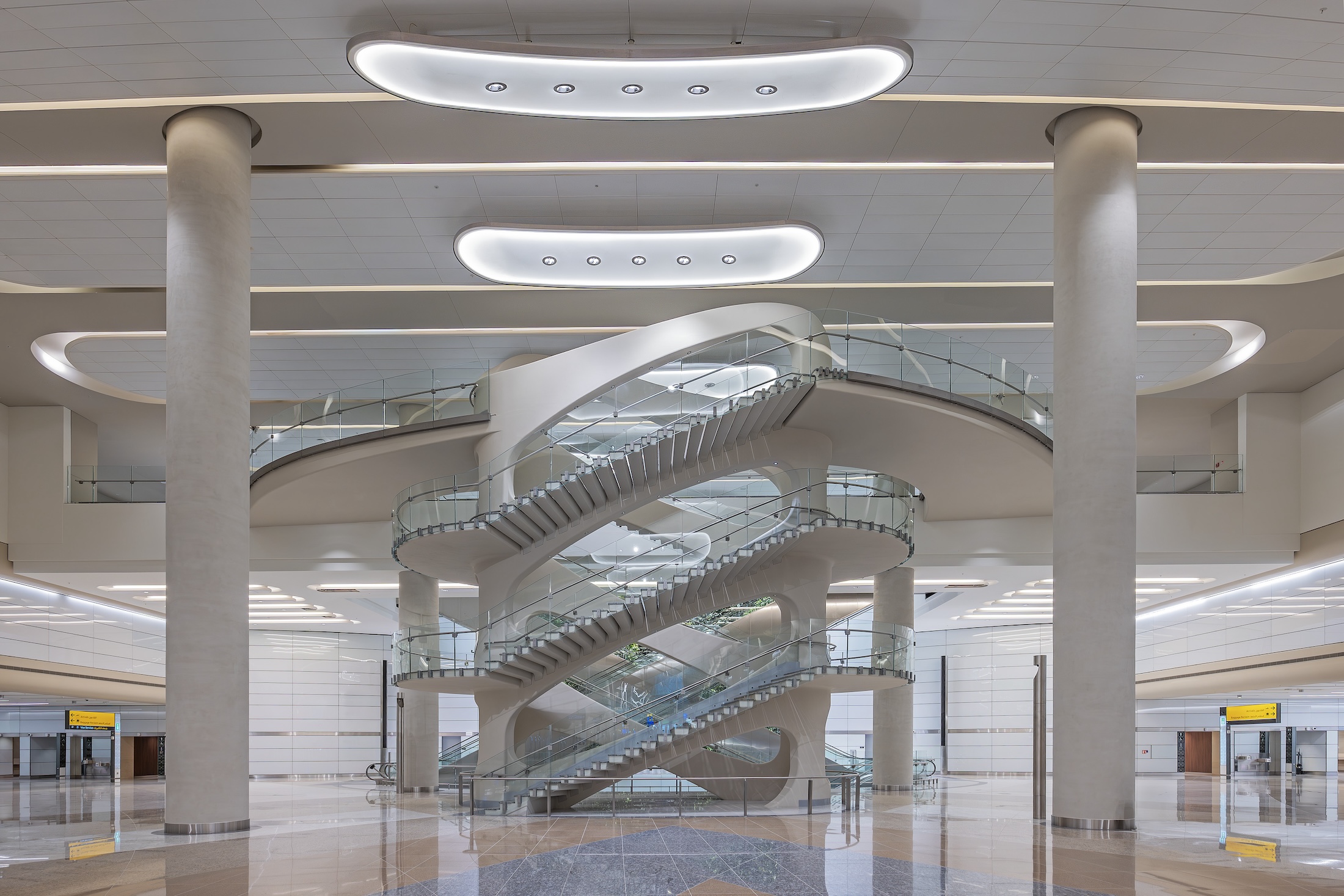

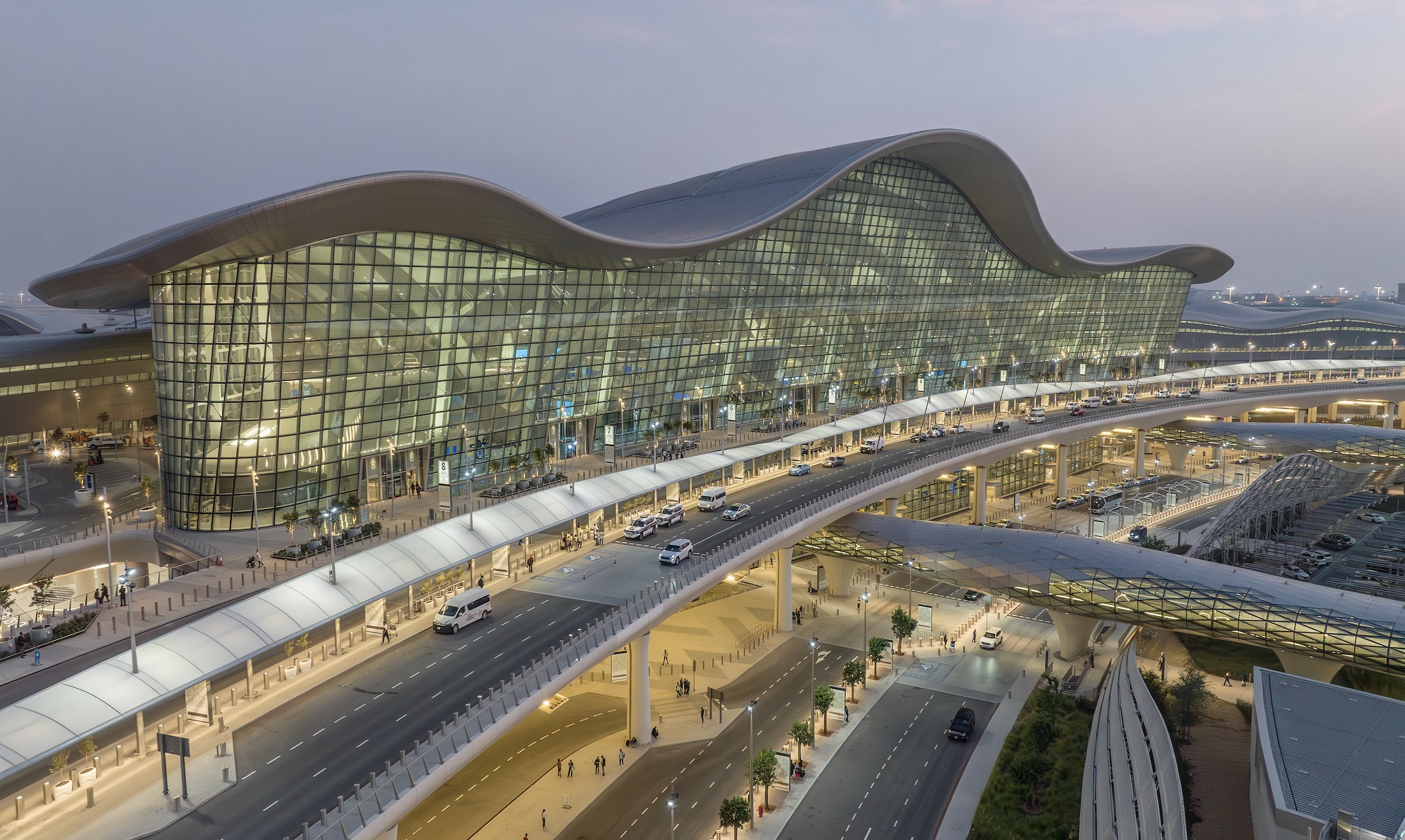
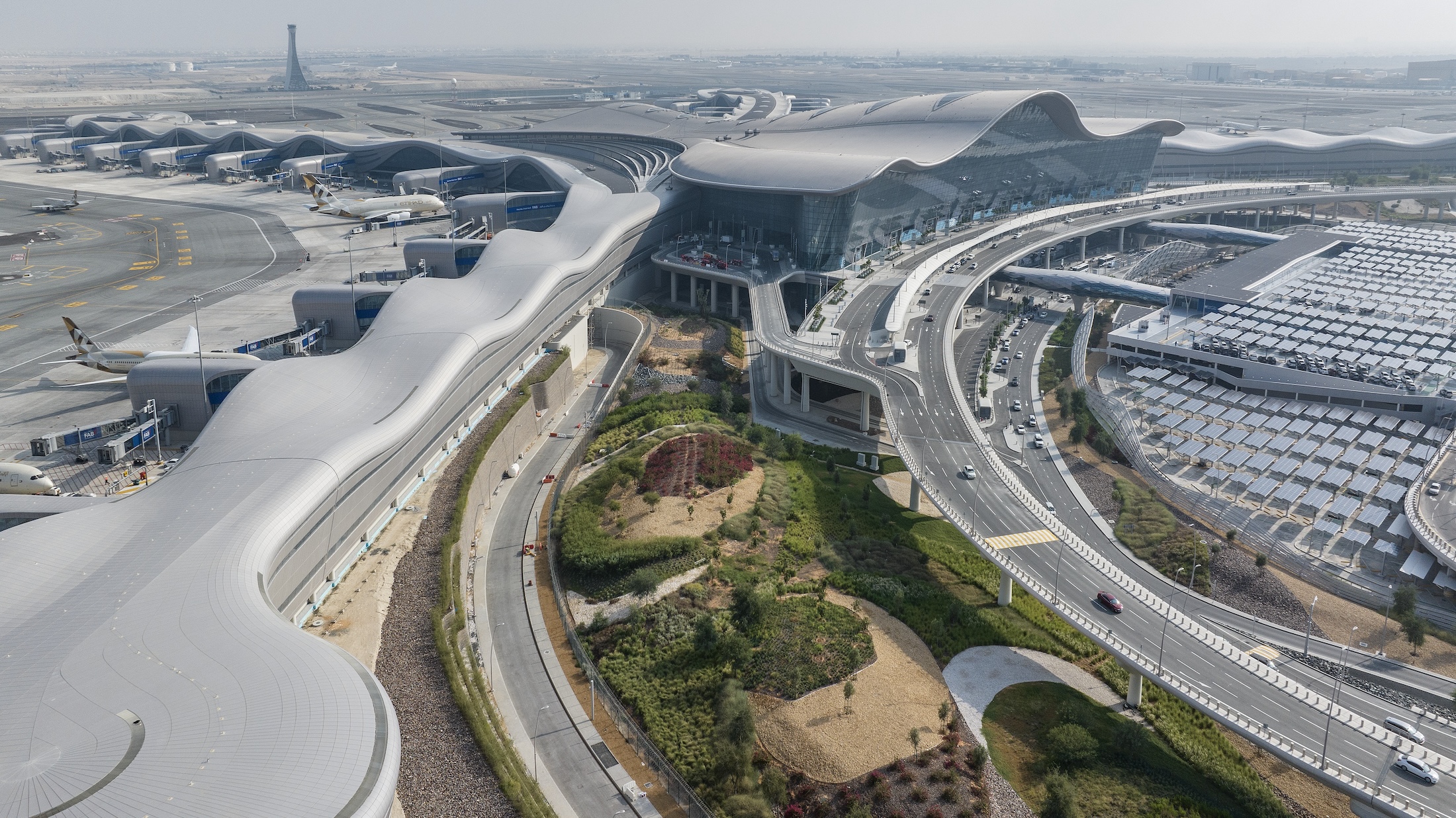
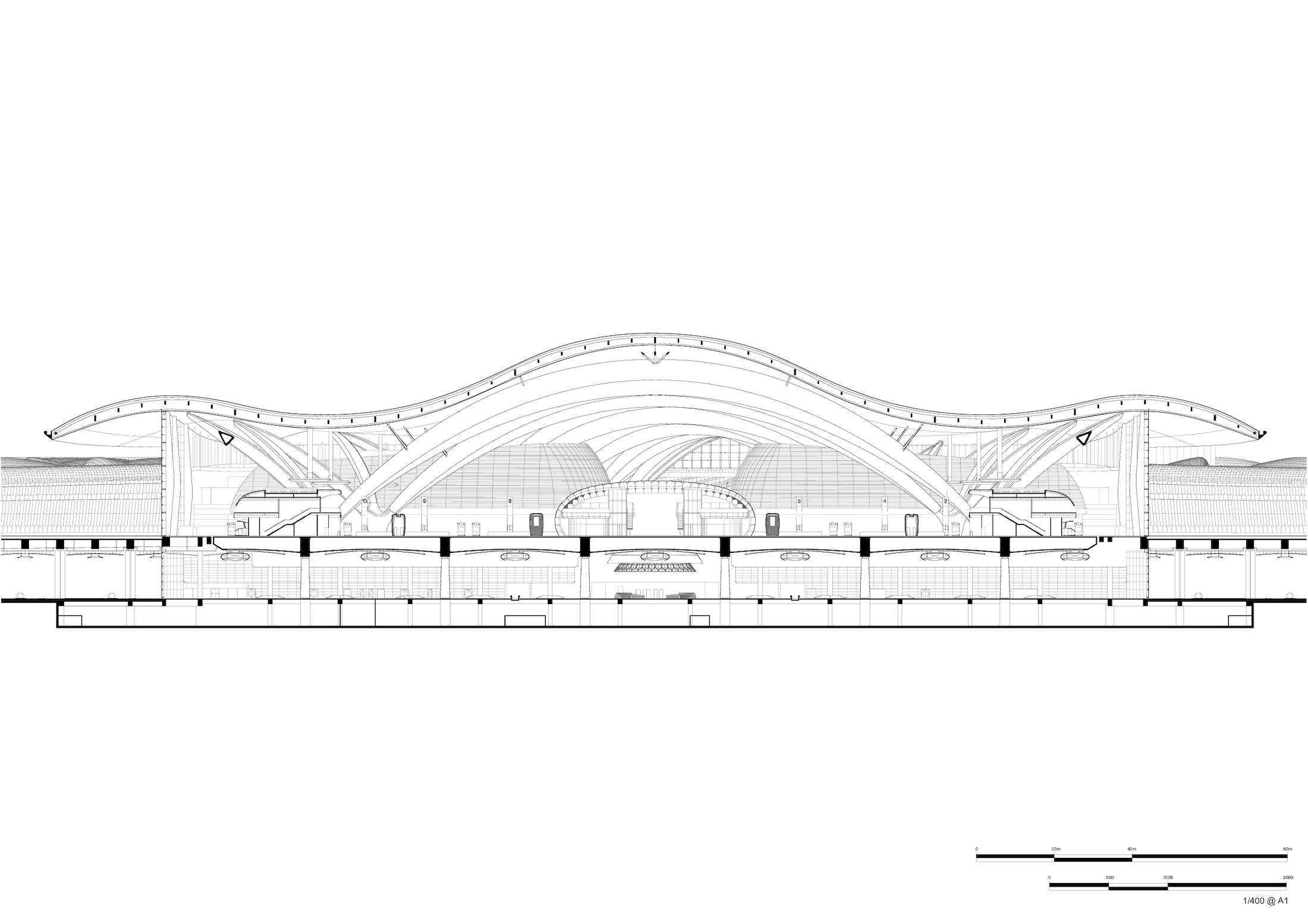
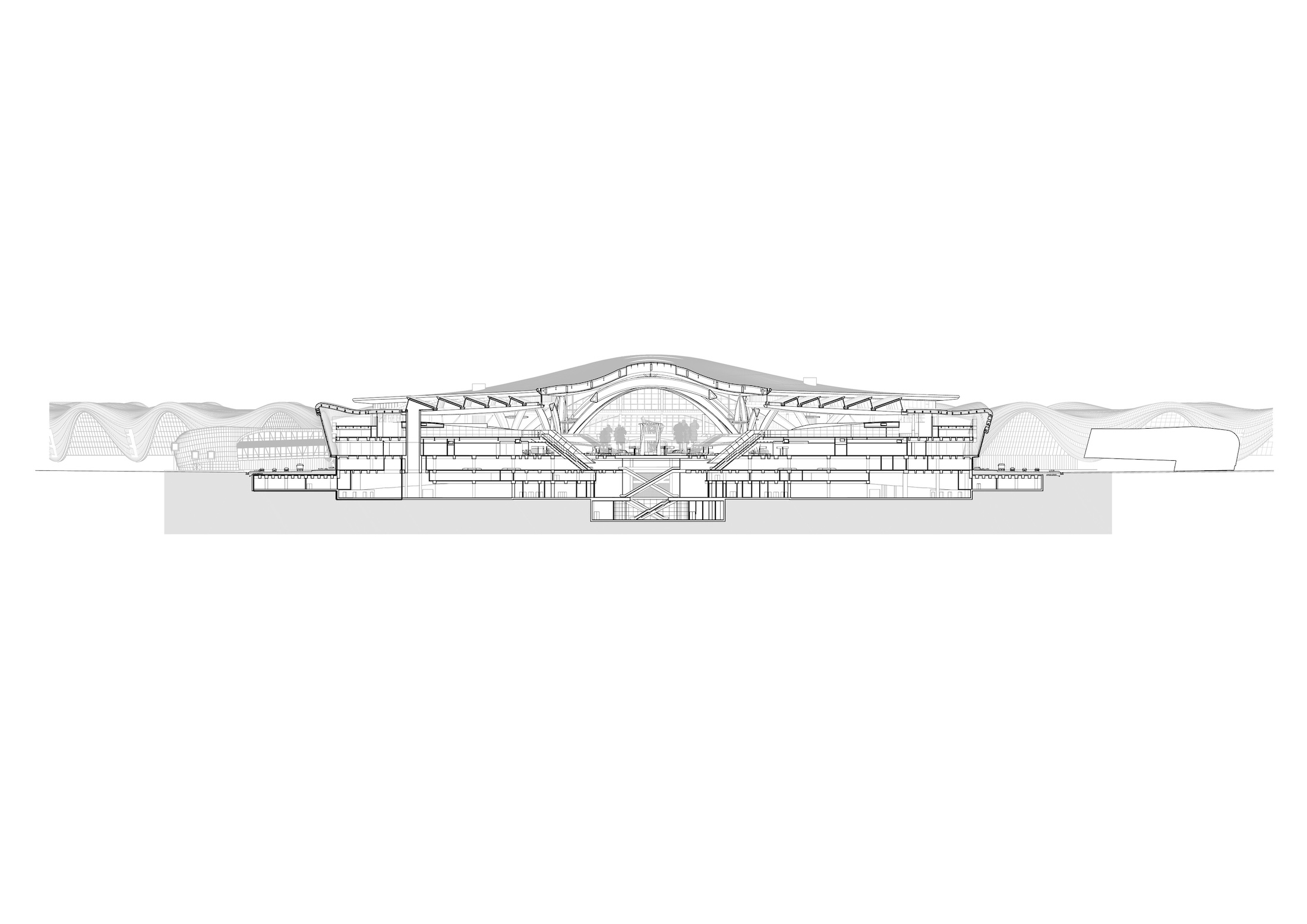
Related Stories
Airports | Sep 11, 2017
Terminal modernization: Why bother? Part I
A terminal modernization program can be a complicated and expensive task that airport operators may be hesitant to undertake unless necessitated by demands for increased capacity. This is the first post in our series examining why airport operators should bother to upgrade their facilities, even if capacity isn’t forcing the issue.
Hotel Facilities | Jul 5, 2017
It only took 26 days to complete construction on the Crowne Plaza Changi Airport hotel extension
PPVC techniques allowed the project to save time and manpower.
Airports | Jun 26, 2017
Newark Liberty International Airport breaks ground on $2.4 billion redevelopment project
The project includes a new 1 million-sf terminal building with 33 domestic aircraft gates.
Building Team Awards | Jun 8, 2017
Missing link: Denver International Airport and Transit Center
Gold Award: A new mixed-use transit center fulfills Denver’s 28-year plan to improve access to the nation’s fifth-busiest airport.
Airports | May 15, 2017
Five trends for airport retail
CallisonRTKL Vice President Kevin Horn pinpoints how travel retail is changing dramatically.
Reconstruction & Renovation | Mar 16, 2017
Pols are ready to spend $1T on rebuilding America’s infrastructure. But who will pick which projects benefit?
The accounting and consulting firm PwC offers the industrial sector a five-step approach to getting more involved in this process.
Airports | Feb 23, 2017
New Orleans Airport to add five additional gates and $110 million to current expansion
The project is being hailed as the city’s most transformative since the construction of the Superdome.
Projects | Jan 25, 2017
Trump prioritizes infrastructure projects, as rebuilding America is now a hot political potato
Both parties are talking about $1 trillion in spending over the next decade. How projects will be funded, though, remains unresolved.
Airports | Jan 17, 2017
JFK Airport set for $10 billion renovation
In addition to the airport itself, the overhaul will also improve road and rail access to meet projected passenger growth.
Airports | Dec 6, 2016
Phoenix Sky Harbor International Airport creates a destination inside Terminal 3
DWL Architects, SmithGroupJJR, and Corgan design passenger experience that connects to the surrounding city and Sonoran desert landscape.


